by hankinslawrenceimages | Oct 16, 2010 | Asteraceae Family, Flowers
I’ve been looking at some of the photos I took last year – and have never gotten around to editing or posting here on the blog. I found a fun set from last year’s Chrysanthemum Festival at Longwood Gardens. I figured I’d better start sharing these – before I start photographing chrysanthemums this year.
One of the major groups of chrysanthemums are the Spoon Mums (chrysanthemum x morifolium). They are closely related to the daisy mums. The difference is in the petals. In the spoon mums, the petals form a tube – and then open out into a spoon shape at the end. They are very distinctive looking.
I photographed three types of spoon mums at last year’s Chrysanthemum Festival.
The first is the Redwing Spoon Mum. I love the contrast of yellow, white and red in these flowers.
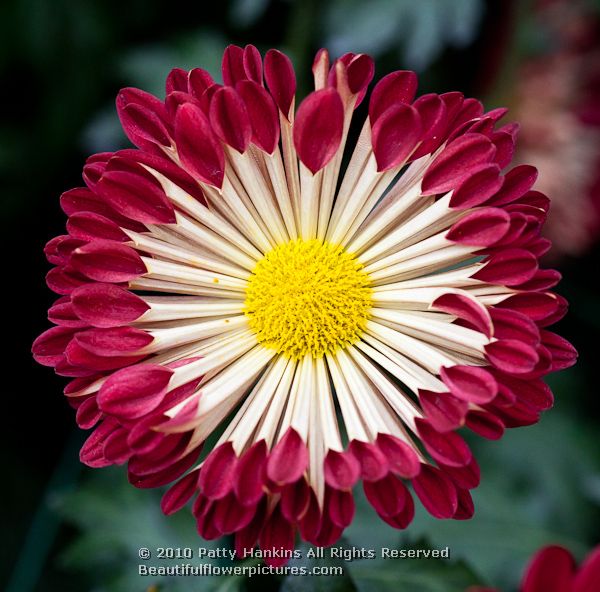
(c) 2010 Patty Hankins
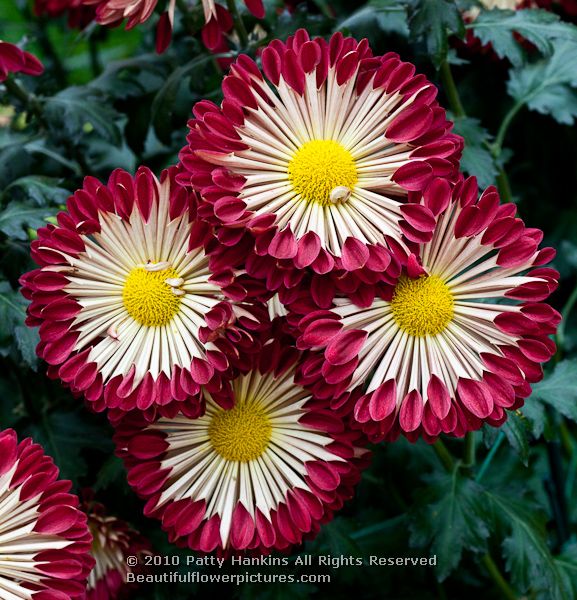 (c) 2010 Patty Hankins
(c) 2010 Patty Hankins
I had fun taking this final photo of the Redwing Spoon Mum – I loved the way the spoon ends of the petals look when one flower overlaps another.
 (c) 2010 Patty Hankins
(c) 2010 Patty Hankins
Next is the Yolaporte Spoon Mum – a wonderful purple, yellow and white chrysanthemum
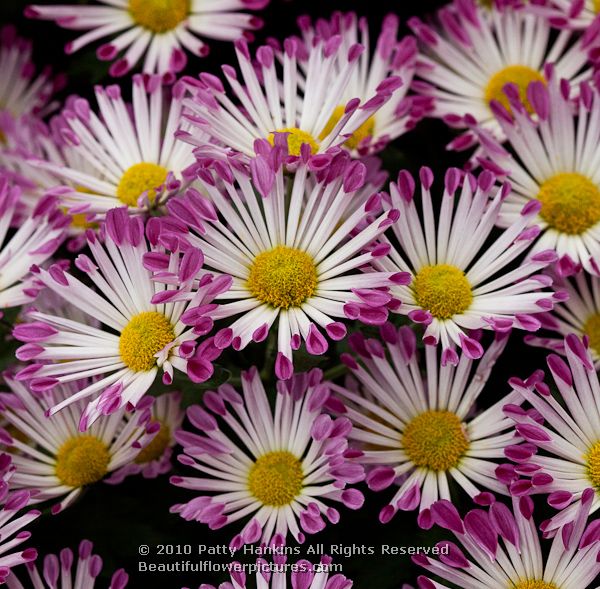 (c) 2010 Patty Hankins
(c) 2010 Patty Hankins
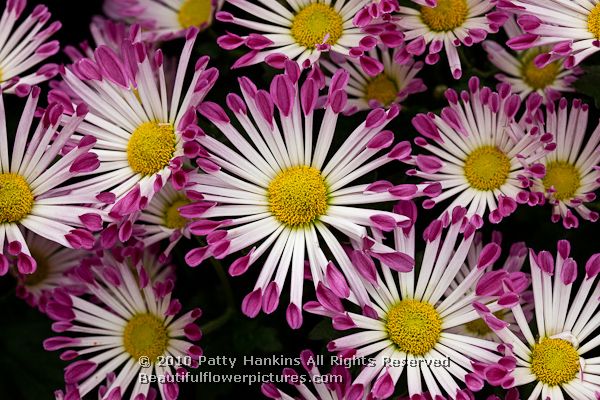 (c) 2010 Patty Hankins
(c) 2010 Patty Hankins
And yet again – I had fun photographing the petals

(c) 2010 Patty Hankins
And finally the Trendy Time Spoon Mum – a wonderful flower in shades of yellow

(c) 2010 Patty Hankins
Now that I know how to identify a Spoon Mum – I’ll be keeping my out so I can photograph more varieties of them.
by hankinslawrenceimages | Dec 12, 2009 | Asteraceae Family, Flowers
Another of the thirteen classes of chrysanthemums I photographed at Longwood Gardens Chrysanthemum festival this year were two members of the Irregular Incurve Class of chrysanthemums. According to the National Chrysanthemum Society, irregular incurve chrysanthemums are described as “These are the giant blooms of the chrysanthemum genus. The florets (petals) loosely incurve and make fully closed centers. The lower florets present an irregular appearance and may give a skirted effect.”
The first variety of irregular incurve chrysanthemums I photographed was a wonderful maroon and yellow flower called “Crimson Tide.”

(c) 2009 Patty Hankins
This next photo shows the compact center of the flower
 (c) 2009 Patty Hankins
(c) 2009 Patty Hankins
And one that shows the irregular petals around the edge. I love the way the petals curl
 (c) 2009 Patty Hankins
(c) 2009 Patty Hankins
The second variety of irregular incurve chrysanthemum I photographed was Houston – a bright yellow flower.
 (c) 2009 Patty Hankins
(c) 2009 Patty Hankins
I hope you’re enjoying my chrysanthemum photos. I’m still editing my photos from the Longwood Gardens Chrysanthemum Festival and I will be posting more of them here in the next few weeks.
by hankinslawrenceimages | Dec 5, 2009 | Asteraceae Family, Flowers
When I visited the Chrysanthemum show at Longwood Gardens this fall, I was amazed at all the varieties of mums that were on display. As I explored the exhibit, I learned that there are thirteen bloom forms of chrysanthemums.
One of my favorites is the Spider Mums. According to the classification system of the National Chrysanthemum Society “Spiders have long tubular ray florets which may coil or hook at the ends. The florets may be very fine to course.”
At Longwood Gardens, I photographed three varieties of spider chrysanthemums. The first is a wonderful bright yellow Golden Splendour Spider Chrysanthemum.

(c) 2009 Patty Hankins
The Golden Splendour Chrysanthemums were growing in groups in the conservatory when I visited. The groupings of the these large yellow flowers were magnificent.
 (c) 2009 Patty Hankins
(c) 2009 Patty Hankins
The flowers were as interesting from the side as they were from above. This next photo shows the incredible three dimensional look of the flowers.
 (c) 2009 Patty Hankins
(c) 2009 Patty Hankins
The second variety of spider chrysanthemum that I photographed was a Descano Spider Chrysanthemum. I wasn’t very happy with most of my photos of the Descano flowers. The red, orange and yellow colors in the blossoms were incredible. The one photo that I am happy with is this close up that shows the intricate detail and texture of the flower.
 (c) 2009 Patty Hankins
(c) 2009 Patty Hankins
The third variety of spider mum I photographed was an unnamed purple variety. I love the way these flowers look in a group.

(c) 2009 Patty Hankins
 (c) 2009 Patty Hankins
(c) 2009 Patty Hankins
I hope Longwood Gardens has another chrysanthemum show next year, I really would like to photograph more varieties of spider mums.
by hankinslawrenceimages | Nov 30, 2009 | Asteraceae Family, Flowers, Photo Locations
I recently had a chance to check out the Chrysanthemum Festival at Longwood Gardens. The show was up for just over a month in October and November. In addition to all sorts of wonderful varieties of chrysanthemum plants in around the Conservatory, there were some absolutely spectacular chrysanthemum displays.
First was the 1000 Bloom Chrysanthemum. With over 700 blossoms growing on one stem, this year’s 1000 bloom chrystanthemum is the largest ever grown at Longwood Gardens and is the largest in the United States.
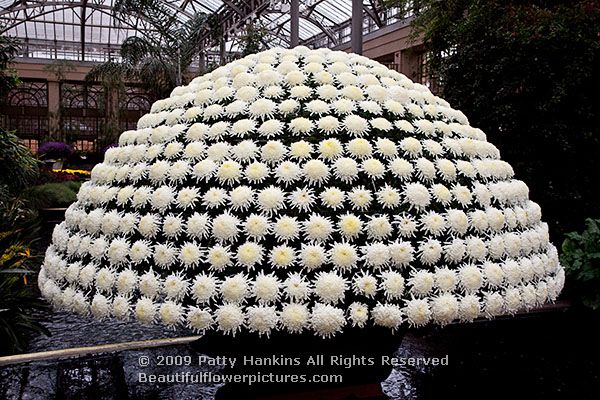
(c) 2009 Patty Hankins
There were also two smaller 1000 Bloom Chrysantemums on display this year – each with over 500 blossoms growing on one stem.
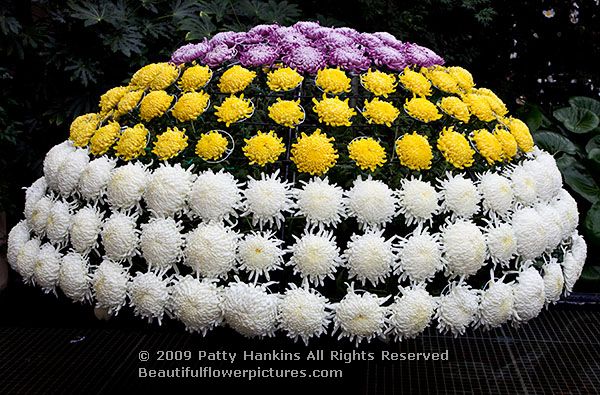
(c) 2009 Patty Hankins
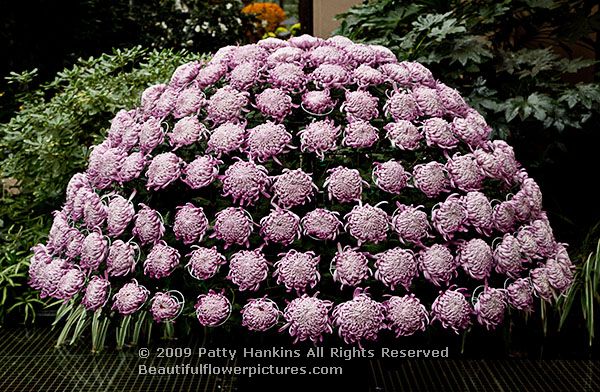 (c) 2009 Patty Hankins
(c) 2009 Patty Hankins
There was also a Chrysanthemum Shield with 172 blossoms growing from one stalk. Longwood’s garden staff learned the technique for growing the shield chrysanthemum a Japanese chrysanthemum grower – Mr. Tadashi Imafuku.
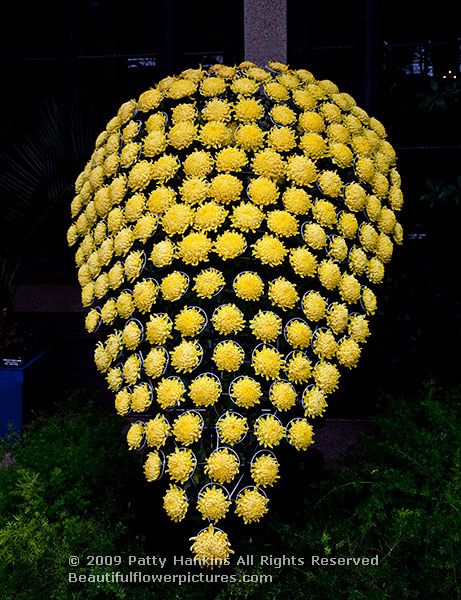 (c) 2009 Patty Hankins
(c) 2009 Patty Hankins
And then there were the Chrysanthemum Trees in front of the Music Room. Longwood’s Garden staff designed this display using Cherry Trees that were scheduled to be composted and chrysanthemums grown in a curtain style.
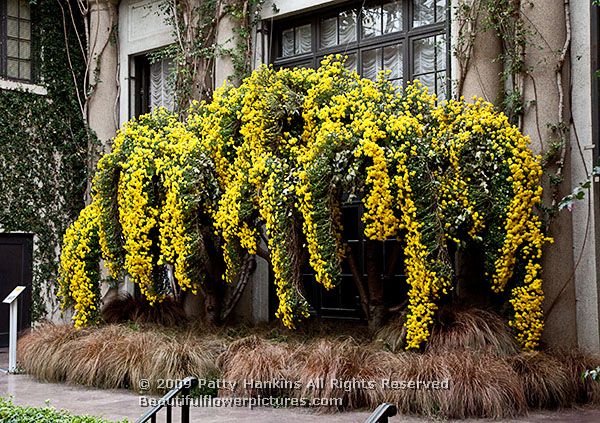 (c) 2009 Patty Hankins
(c) 2009 Patty Hankins
The final set of decorations that I just had to photograph were the giant bees suspended around the main part of the Conservatory. Throughout 2009, Longwood Gardens has been running an educational program on The Buds and the Bees, Pollination and Secret Lives of Plants. The giant bees in the Conservatory were a great reminder of how important bees and pollination are in nature.
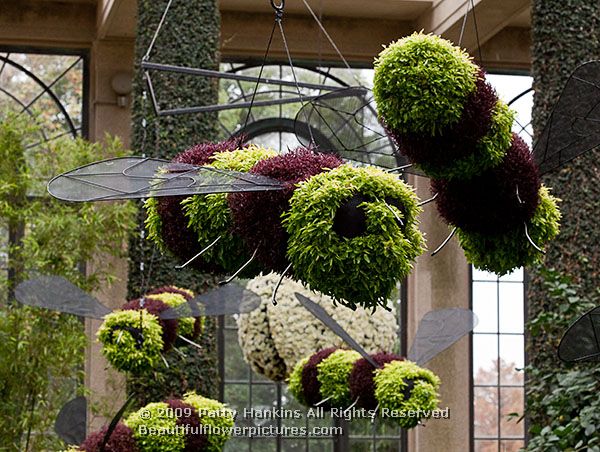
(c) 2009 Patty Hankins
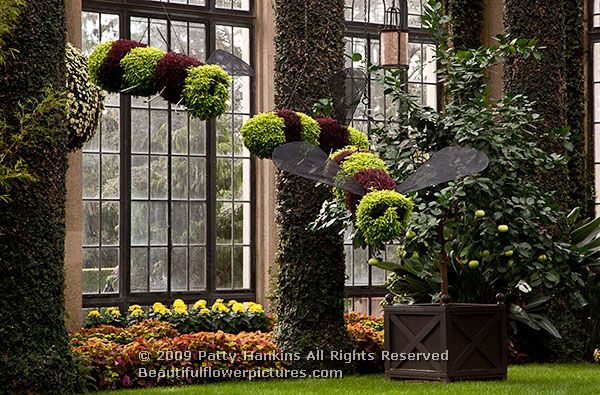 (c) 2009 Patty Hankins
(c) 2009 Patty Hankins























